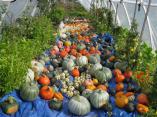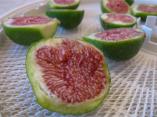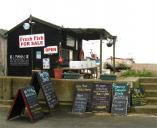The older I get the more I experience the Whoosh factor: one minute I’m staring at West Coast rain, and the next it’s a sunny morning in Silicon Valley, and I’m part of a 1,700-strong hive of health at the Santa Clara Conference Center. We’re buzzing round stands promoting magnetic beds, fermented cod liver oil, natural cosmetics, books on healthy stomach acid and fermentation and nutritional cures for mood disorders. There’s a seafood stand doing a brisk trade in Alaskan salmon roe, a couple of guys selling crispy nuts – raw almonds which have been soaked and dried according to principles laid down by Sally Fallon Morrell, our queen bee if ever there was – and someone offering tastes of a new product made with ratfish oil.
Soon my hands are warmed by my cup of beef broth and I’m balancing a bowl of full fat  sheep’s milk yogurt with frozen blueberries. I have some organic fruit and cheese in my pocket for later and am considering how I can manage to juggle a couple of boiled eggs before grabbing a bottle of raw milk to wash it all down. In my bag I have a small jar of coconut oil, some pecan nut butter and a small package of granola made from pre-soaked grains and coconut.
sheep’s milk yogurt with frozen blueberries. I have some organic fruit and cheese in my pocket for later and am considering how I can manage to juggle a couple of boiled eggs before grabbing a bottle of raw milk to wash it all down. In my bag I have a small jar of coconut oil, some pecan nut butter and a small package of granola made from pre-soaked grains and coconut.
Such was the sweet beginning to my first Weston A Price Foundation conference. Those breakfast items were purchased for Moolah, tickets sold in support of the 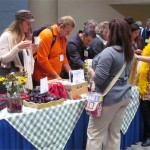 Farm-to-Consumer Legal Defense Fund, which exists to help those persecuted by the FDA for living the WAPF dream of eating nutrient-dense foods, including raw milk.
Farm-to-Consumer Legal Defense Fund, which exists to help those persecuted by the FDA for living the WAPF dream of eating nutrient-dense foods, including raw milk.
And eat we did over those three days. If I saw one person raising a piece of sourdough wholemeal rye topped with half an inch of butter to their lips, I saw a hundred, at every meal. The lunch and supper buffets were groaning with pastured meats, whole fat cheese and sour cream, fresh green salads, liver sausage and fermented foods of all descriptions. We had sauerkraut pretty much every meal, plus kimchi, fermented apple butter, lightly pickled beets and kombucha. (In keeping with the foundation’s food principles, there were no refined carbohydrates or sugar or caffeine.) Several times the meal lines stalled while the kitchen scrambled to keep up with 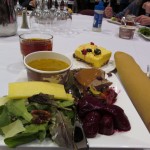 demand. At every table there was a shaker of Celtic sea salt with which we could lavish minerals as well as flavour onto our food. More than one mealtime conversation embellished the theme of “how great is it to be able to trust conference food?” And it was good.
demand. At every table there was a shaker of Celtic sea salt with which we could lavish minerals as well as flavour onto our food. More than one mealtime conversation embellished the theme of “how great is it to be able to trust conference food?” And it was good.
And given all that food, what was really unusual here was the size of the participants. There was another event going on at the same time in the centre, a spirituality conference: the participants there were strikingly like most large gatherings of Americans that I’ve been to: a good proportion were morbidly obese, most were at least chunky. The Weston A Price people were proportioned more like Canadians or Europeans: not many would have been described as heavy, very few obese, and most were either slender or fit. And this wasn’t because they were all in the first flush of youth: middle age was the norm. 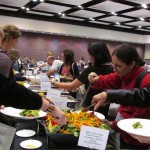 Living proof that fat doesn’t make you fat.
Living proof that fat doesn’t make you fat.
I’ll follow this entry up with more about the talks I attended that left my brain buzzing even while my body hummed with contentment.


